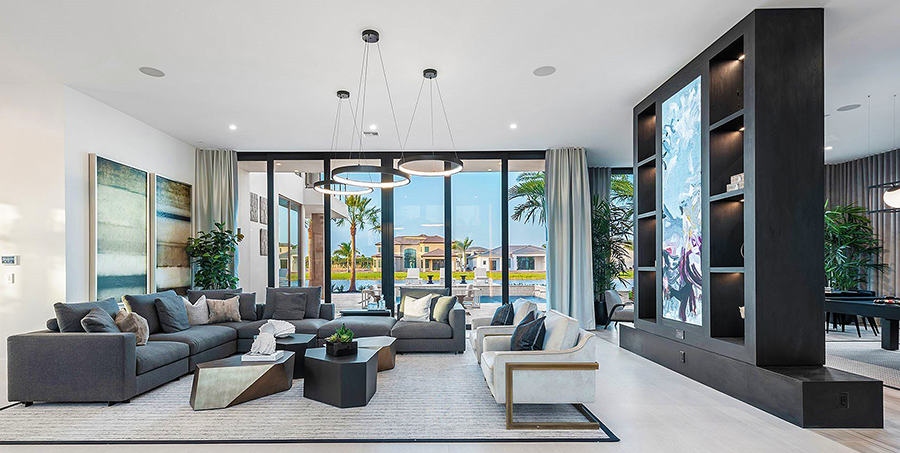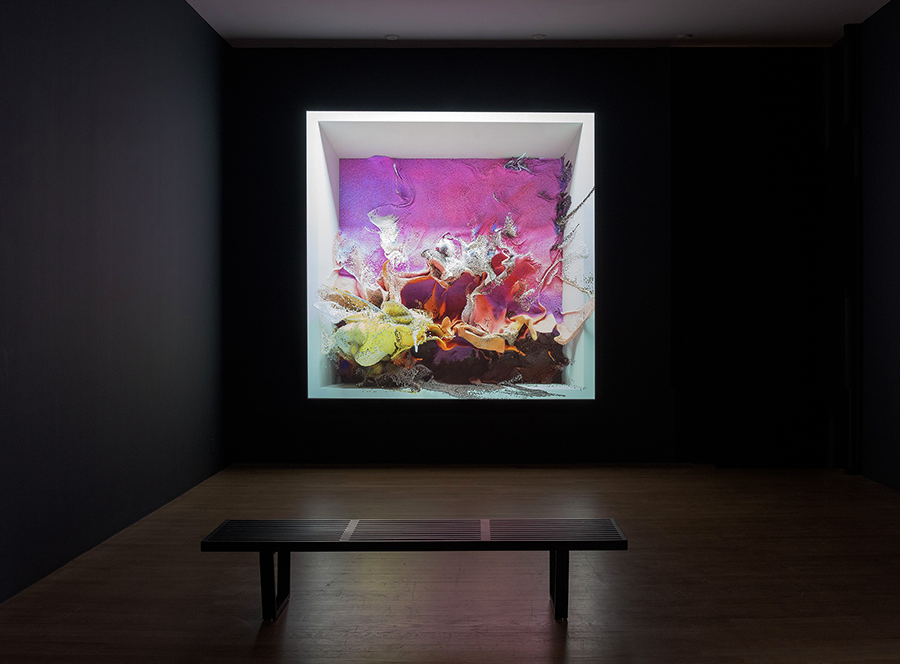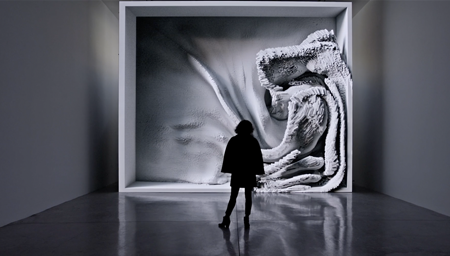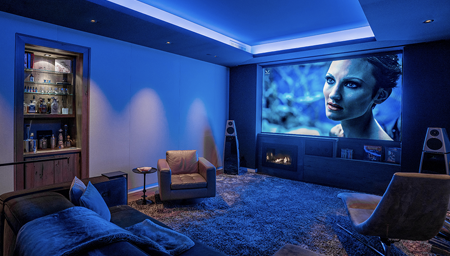Enriching the Artist’s Digital Palette
Barco’s Tim Sinnaeve says artist Akiko Yamashita’s recent comments show that the creative community is beginning to embrace the potential of digital canvases
by Tim Sinnaeve
August 19, 2022
I was very happy to read Akiko Yamashita’s comments on digital art in Kirsten Nelson’s piece “Natural Wonder” since much of what she had to say reflects the vision I have been working to share over the past few years with clients, artists, architects, designers, and integrators to excite them about the possibilities for displaying new-media art on digital canvases in the home. Her comments are especially encouraging because they show that artists are beginning to embrace not just the vision but the more practical aspects of having their work properly presented. So, in the hope of furthering this important conversation, I welcome the opportunity to share my thoughts on some of Akiko’s observations.
I was very happy to read Akiko Yamashita’s comments on digital art in Kirsten Nelson’s piece “Natural Wonder” since much of what she had to say reflects the vision I have been working to share over the past few years with clients, artists, architects, designers, and integrators to excite them about the possibilities for
an excerpt from Davide Quayola’s 28-minute video loop Pleasant Places (2015)
video | Davide Quayola, Bitforms Gallery
displaying new-media art on digital canvases in the home. Her comments are especially encouraging because they show that artists are beginning to embrace not just the vision but the more practical aspects of having their work properly presented. So, in the hope of furthering this important conversation, I welcome the opportunity to share my thoughts on some of Akiko’s observations.
above | in this interview from 2019, Tim discusses the opportunities and pitfalls of properly presenting digital art in a residential environment—an effort that is just now beginning to bear significant fruit
“I prefer as high resolution as possible, and smaller pixel pitch would be great. . . . But there are also artists that make great low-res installations. If I were to create artwork that was about seeing the pixels, I would be totally down to do super-low-pitch. It just has to be used intentionally.”
I have often said that artists shouldn’t feel compelled to use the highest-possible resolution but should be free to experiment, using things like lower resolution to help create texture in a work. The technology shouldn’t dictate the form of the artwork but instead needs to become a tool for the artist. This has always been the case in the creation of more traditional media like painting, but it’s even more relevant with new-media art since so much hinges on how the work is displayed, and there are so many more mistakes that can be made on the installation side.
The creative opportunities go well beyond using resolution to create texture, though. I think back to a discussion with the artist Davide Quayola. We were looking at some of his work when the LED canvas suddenly went into eco mode, reducing its light output, and we were both struck by how the image took on a very analog appearance. So not only can you use resolution to create texture; you can also use brightness to help create the right look and feel for a work of art.
I of course have no issue with someone using high resolution as long as it’s done deliberately and not just because it is what we have come to expect from decades of marketing that equates “higher resolution” with “better.” Whether we’re talking about higher or lower resolution, the artist, as Akiko says, should employ it intentionally.
“Where we should be heading is framing, placement, and curation that is handled the same as with fine art. Or it becomes just TVs or a screensaver.”
This is my favorite quote. Digital art needs to be curated no differently from traditional art, and just as much attention needs to be paid to the framing, mounting, and lighting for one of Akiko’s works as it would for something like a Rothko. A digital work should be created and presented with the same freedom we already give to painting and other traditional media. For instance, artists shouldn’t feel constrained to work within the 16:9 aspect ratio we have all come to associate with TVs and computer screens but should be able to create in whatever ratio best suits their work.
above | in this interview from 2019, Tim discusses the opportunities and pitfalls of properly presenting digital art in a residential environment—an effort that is just now starting to bear significant fruit


a digital canvas built into a wall unit (left) and Refik Anadol’s Quantum Memories shown in a gallery setting (right) provide examples of breaking free of the traditional association of video displays with 16:9 computer monitors and TVs
One significant difference from traditional art, though, is that far more of the onus for properly presenting digital art falls on the exhibition side. Because Picasso wanted his work to be properly displayed and preserved, he never would have painted it on something like toilet paper. Showing a high-value digital work of art on a poorly positioned and lit generic TV, however, would be the equivalent of that. And the screensaver connotation is anathema to the presentation of serious art. As a collector was quoted as saying in a Wall Street Journal article on digital art, “I don’t want my house to look like I live at Best Buy.”
To create that same effect at home, Akiko speculated that digital artists might want to start packaging their artwork with customized display kits. Especially for collectors who are considering investing in full-scale media walls at home, it might make sense to conform to these tech-savvy artists’ visions.
I absolutely agree with the intent here, which is that the artist should have a say in how their work should be displayed in the home. But the technology can make packaging difficult, and packaging can be limiting in itself. This is where I see value for a custom integrator as someone who can take the vision of the artist and accurately represent it in a domestic environment, essentially becoming the curator of the digital canvas.
At this level of art and this level of representation, someone is not going to just order artwork off Amazon and plunk it down in a room. If you pay $100,000 for a work and then skimp on however much it costs to display it properly, you haven’t saved yourself whatever you think you have saved on the technology. You have actually devalued your investment and your experience.
This is an opportunity for the custom integrator to become a trusted partner of the art world, and that’s not something every integrator is going to have the interest or the ability to do. So this, by its nature, is an opportunity for only a limited number of integrators, ones who have close relationships with architects and designers and are willing to become part of the digital-art eco system.
To facilitate this, I can imagine a form of metadata where the artist basically determines what the digital canvas has to conform to in order to maintain the artistic integrity of their work. This would, in a sense, give them the ability to disown a work if it’s not properly presented.
A specialized custom integrator who has established himself as a curator of digital canvases would be armed with this metadata from the artist as to how the installation should be done. Knowing that there are integrators who specialize in this and that there is a mechanism to ensure that the artist’s intentions are honored is something everybody can feel good about. It’s very encouraging to see both artists and collectors starting to pick up on this and to see the increasing enthusiasm for digital canvases in the home.
Tim Sinnaeve is responsible for Barco’s Residential Group, where he oversees Barco’s global strategy in fulfilling its mission of creating Architectural Digital Canvases that enable the most immersive entertainment and cultural experiences for customers to share with loved ones in the comfort of their homes. He is especially interested is raising awareness of new-media art and has frequently written and spoken on the subject.
a digital canvas built into a wall unit (left) and Refik Anadol’s Quantum Memories shown in a gallery setting (right) provide examples of breaking free of the traditional association of video displays with 16:9 computer monitors and TVs
Quantum Memories |
Refik Anadol, Bitforms Gallery
© 2025 Cineluxe LLC





